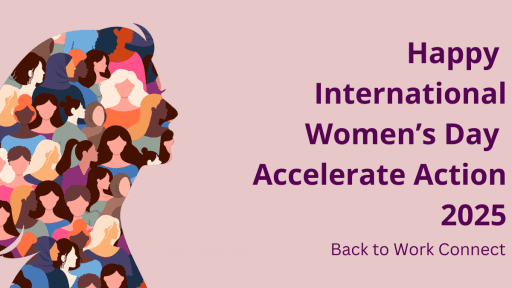#AccelerateAction
Every year on March 8th, the world comes together to celebrate International Women’s Day (IWD)—a day that recognises the achievements of women while calling for greater gender equality. But beyond the hashtags and celebrations, why does this day exist? Why do we still need it in 2025 and beyond?
A Brief History: The Fight for Equality
International Women’s Day has its roots in the early 20th century, born out of labor movements and the fight for women’s rights. The first National Women’s Day was observed in the United States in 1909, following protests by garment workers in New York demanding better pay, shorter hours, and voting rights. The movement soon spread globally, and in 1911, the first official International Women’s Day was marked in Austria, Denmark, Germany, and Switzerland.
In 1977, the United Nations officially recognised March 8th as International Women’s Day, reinforcing the need to celebrate women’s achievements and push for equality worldwide.
Why International Women’s Day Still Matters
Despite over a century of progress, gender inequality remains a global issue. According to the World Economic Forum, at the current rate, it will take until 2158 to achieve full gender parity—a staggering five generations from now. This is why the theme for IWD 2025, “Accelerate Action,” is more relevant than ever.
1. The Gender Pay Gap Persists
Women, on average, still earn less than men for the same work. Factors like occupational segregation, unpaid care responsibilities, and systemic biases contribute to this ongoing issue. Closing the gender pay gap isn’t just about fairness—it’s about economic growth, as studies show that gender-equal workplaces are more productive and profitable.
2. Women Are Underrepresented in Leadership
In politics, business, and STEM fields, women remain underrepresented in leadership roles. While progress has been made, breaking through the “glass ceiling” remains a challenge for many women, particularly those from marginalised communities. Encouraging female leadership isn’t just about representation—it fosters innovation, diverse decision-making, and stronger economies.
3. The Burden of Unpaid Labor
Women disproportionately take on unpaid care work, from childcare to eldercare, often limiting their ability to pursue education or career opportunities. Addressing this requires structural support—such as parental leave policies, affordable childcare, and workplace flexibility.
4. Gender-Based Violence Remains Prevalent
Violence against women is a global crisis. From domestic abuse to harassment in workplaces, gender-based violence limits women’s freedom, safety, and ability to thrive. International Women’s Day serves as a platform to push for stronger laws, education, and support systems to protect women everywhere.
How Can We Accelerate Action?
International Women’s Day is more than just a celebration—it’s a call to action. If we truly want to accelerate progress, we need to:
✅ Advocate for equal pay and fair hiring practices
✅ Support policies that enable work-life balance for all genders
✅ Empower women through education, upskilling, and mentorship
✅ Challenge gender norms and amplify women’s voices
✅ Take a stand against gender-based violence and discrimination
The Road Ahead
International Women’s Day reminds us that progress isn’t guaranteed—it requires action. While we celebrate the incredible achievements of women throughout history, we must also recognise that the fight for gender equality is far from over.
It’s time to accelerate change. Not in 2158. Not in five generations. Now.
How will you take action?
#IWD2024 #AccelerateAction #GenderEquality #InternationalWomensDay





